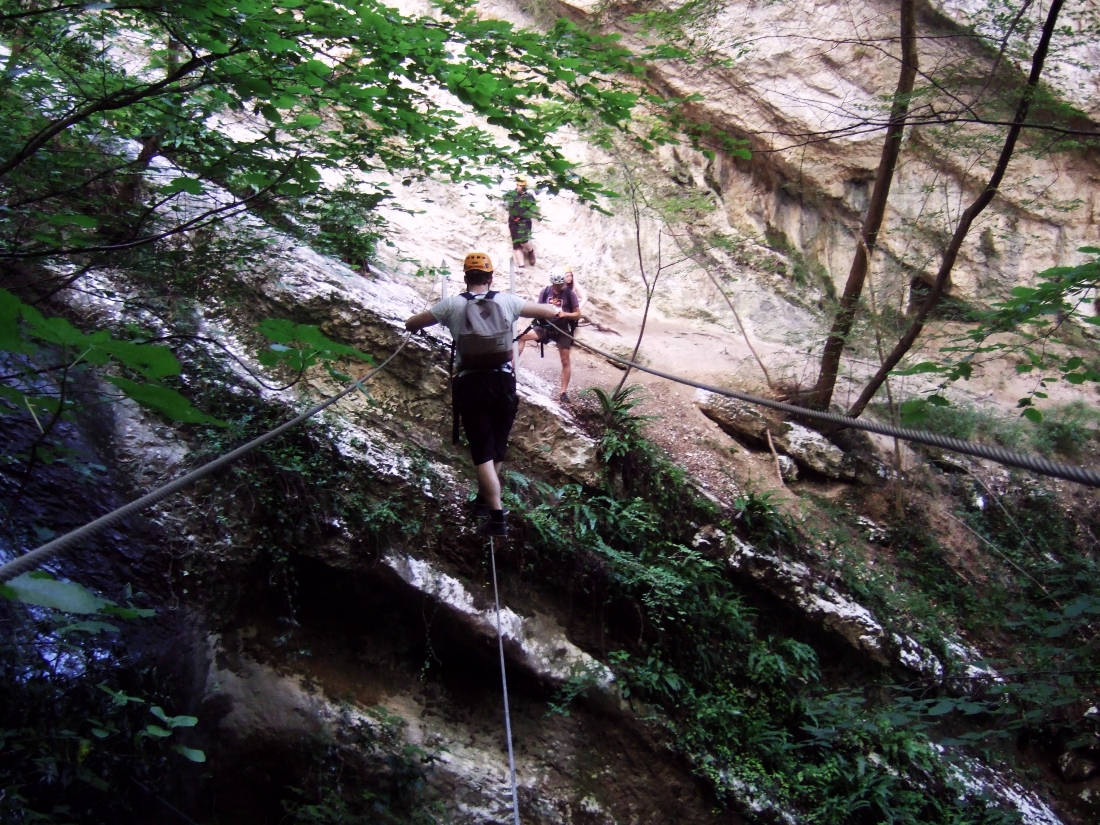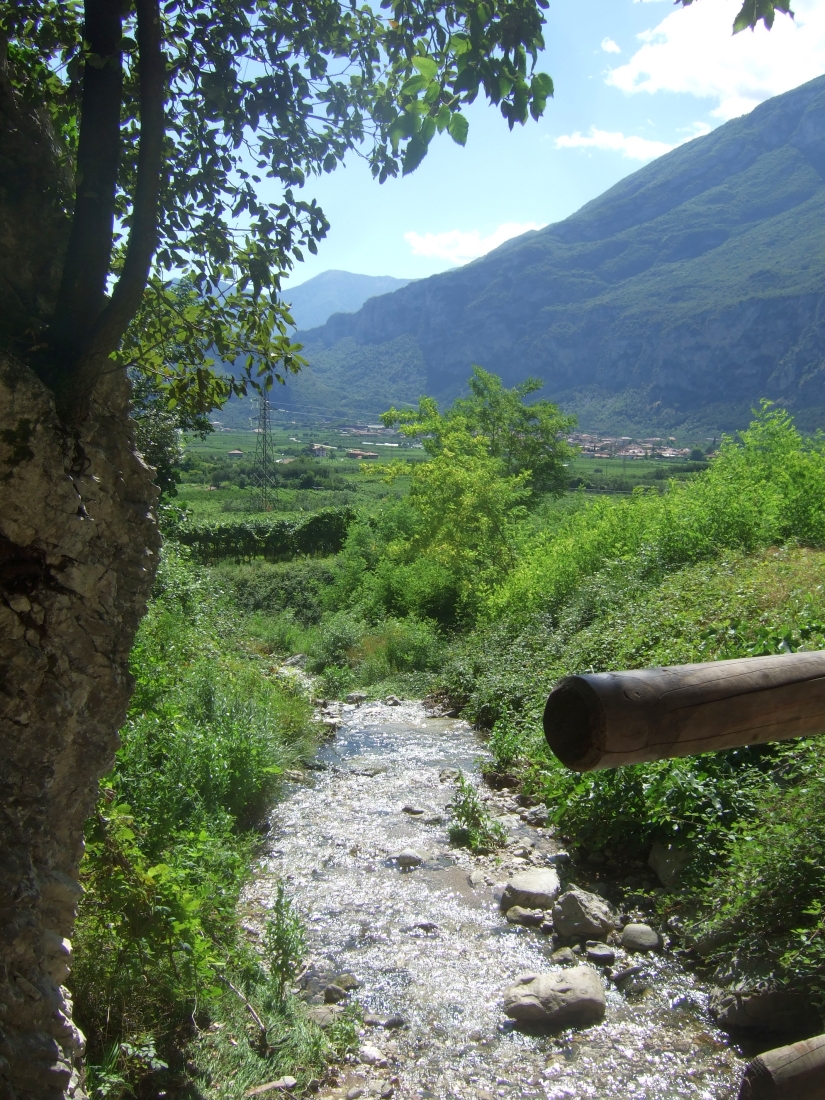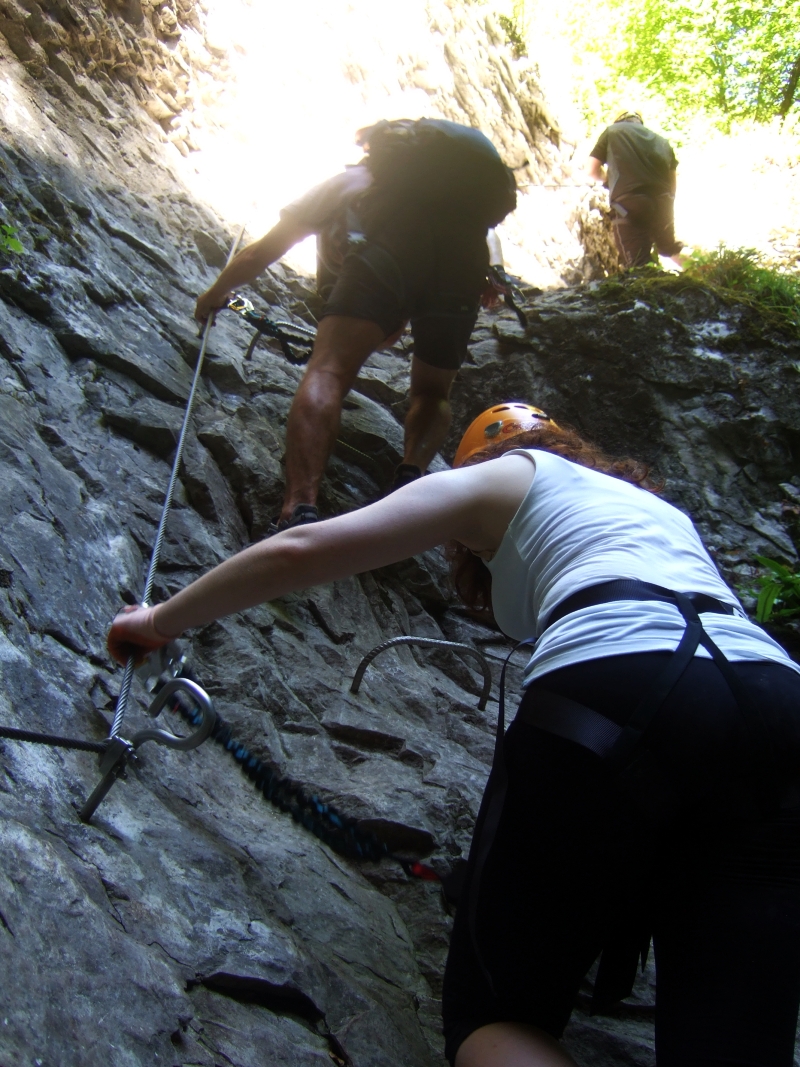Scaling Italy’s Iron Roads

Every so often, in the hills of northern Italy, travelers still stumble onto caches of rusting grenades beneath the snow and ice that lingers from World War I. Italian and Austrian soldiers once crept over these heights under the shade of night, their ears red as raw meat from the snow. They clambered up sheer inclines using wooden pegs and frayed ropes that had been hammered into the rock.
This was the birth of the iron road, the via ferrata.
Now, the rope and wood have been replaced with steel and iron, the soldiers’ cotton caps with helmets and their tunics with stylish climbing harnesses, but the basic principles remain unchanged. Via ferratas are climbing routes that provide aids to those scrambling up them. Climbers attach themselves to a long steel cable for safety, and can then make use of this and other helpful features like steel rungs, steps or even ladders to assist their climb, depending to the specifics of each route.
They via ferratas assist climbing novices in tackling otherwise difficult or dangerous rock faces in relative comfort and without much of the equipment needed for traditional climbing. They can assist with simpler climbs or hikes too.

And for those interested in exploring the parts of northern Italy hidden away from the gaze of most tourists, they offer access to panoramic views and beautiful, secluded spots far from groups of tourists. Sometimes really, really beautiful spots.
My introduction to via ferratas came on the Rio Salagoni, a short course that follows the titular river up through a slender, high-walled valley. It wasn’t so cave-like as to feel claustrophobic but just enough to make us feel even more removed from the clamor of nearby Riva del Garda’s gelaterias and pizza parlors than we already did on our long, glorified ladder.
As inexperienced climbers, for the first part of the climb my group’s focus was resolutely on a few important things:
•Not falling off.
•Not giving ourselves embarrassing wedgies with our harnesses.
•How much we were already sweating in the 95 degree Fahrenheit heat of the Italian summer.
•Getting over the adrenaline high from our drive here, our first taste of Italian driving.

The floor of the valley soon became partly submerged in lazily moving river water, though it was never deep enough to drown all of the rubble that had tumbled down from the cliffs above us. While this was striking enough in its own way, it was not overly photogenic. If I hadn’t been so fixed on the very important things noted above, I would probably have become quite resigned to the thought of it (and my fellow climbers’ backsides) being the only sights for the next 2-3 hours.
But then we rounded the corner to our first rest stop and came upon a sanctuary of nature in the rock. A waterfall tumbled its way down from high above us into an oasis of dirt and grass and trees and flowers. At its top, where the sun peeked through the vegetation, a suspension bridge had been constructed from three wires that ran from one cliff to the other, showing us our next steps.
A family with young children had already reached the spot and were dousing themselves under the waterfall. One of the adults looked on, munching a sandwich and laughing at them.
As I said: really, really beautiful spots.
It was not the last time on our climb that I was taken aback by the scenery. The only thing the afternoon really lacked was more challenge, but, as Italy’s mountainous north is riddled with via ferratas, finding one that is a bit harder or with even more staggering landscapes should not be difficult — though via ferratas had existed before their use here in World War I, the idea really took root in this region.
Adige Valley, for example, boasts a via ferrata that follows the pathway once used by the area’s tobacco and salt smugglers. The more exposed route lacks protection from the sun but provides travelers with sweeping views, as well as an intimidatingly long drop at their feet. Equally, other climbs are more like demanding walks, though most require that climbers can handle heights. In the Dolomites, via ferratas can actually be linked together as part of a longer hiking tour, with huts along the path providing accommodation.
Via ferratas are an almost unique way to see a hidden Italy. They offer a sense of adventure and discovery, in safety and with whatever level of comfort suits, and routes exist to suit all abilities, even fat, increasingly middle-aged people like me.
By Declan Taggart

More Info
My climb up the Rio Salagoni was organized through Canyon Adventures for $80, though companies offering similar deals are ubiquitous in the towns of Arco and Riva del Garda near Lake Garda. Via ferrata is still a relatively obscure phenomenon in comparison to more traditional mountain climbing, but routes can be found all over the world.
Some via ferratas are suitable for children, and equipment can be hired in towns around the north of Lake Garda relatively cheaply for those brave enough to try it without a guide. The Tourist Information Centre in Riva del Garda carries a brochure of popular local paths, though it might be wisest that novices go with someone who has previous experience of via ferratas or climbing.
ABOUT THE AUTHOR
 Declan Taggart is usually to be found studying for a PhD in English Literature, but occasionally likes to go look at things in far off places and then write about them.
Declan Taggart is usually to be found studying for a PhD in English Literature, but occasionally likes to go look at things in far off places and then write about them.
